Cook frozen Brussels sprouts so it's flavorful and tender, not soggy and bitter, with these simple tips! It's the perfect side dish that is both convenient and budget-friendly.
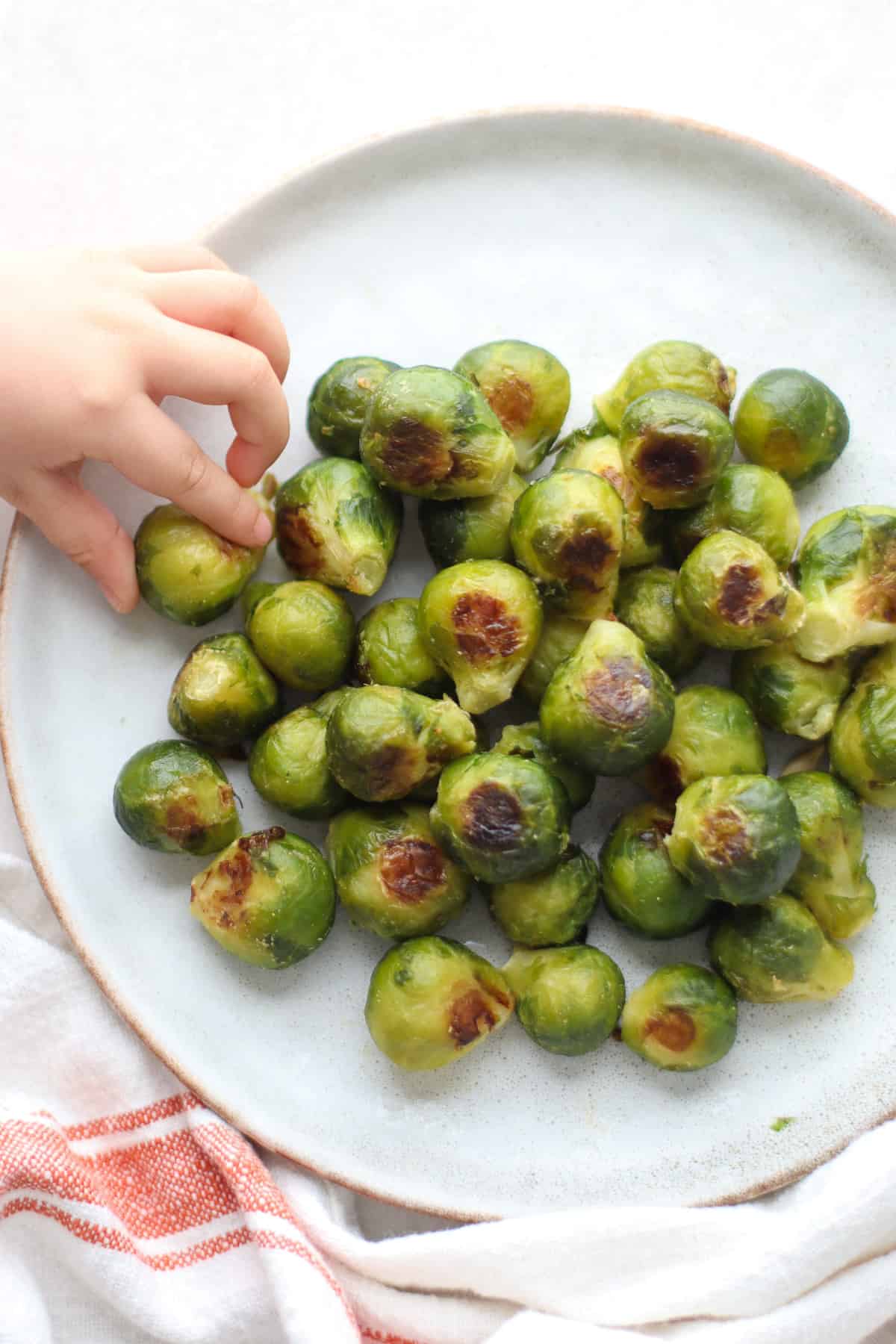
Fresh Vs. Frozen Brussels Sprouts
While I love fresh Brussels sprouts, I turn to frozen sprouts more often than not for so many reasons.
Top one being they are super convenient as there's no need for prepping. They are also just as nutritious as their fresh counterparts, more affordable, and helps to reduce food waste.
Despite my best intentions, I always end up finding them at the back of the vegetable drawer slimy and smelling like old cabbage.
So if you are looking for an easy vegetable side dish for the whole family that you can cook straight from the freezer, be sure to stock up on frozen Brussels sprouts!
And if you're looking for more options, here's how to cook frozen green beans, frozen broccoli, frozen peas, and frozen mixed vegetables.
Jump to:
Health Benefits
Brussels sprouts is a cruciferous vegetable that belongs to the Brassicaceae family, along with broccoli, cauliflower, and cabbage.
These mini cabbages are a great source of vitamin C, vitamin K, folate, fiber, and carotenoids (also found in carrots, tomatoes, and spinach).
All cruciferous vegetables possess a sulfur-containing compound called glucosinolate, which gives them their distinctive odor and flavor. When cooked, it turns into a phytonutrient that has been shown to fight cancer, protect cells from DNA damage, and strengthen the immune system.
Ingredients
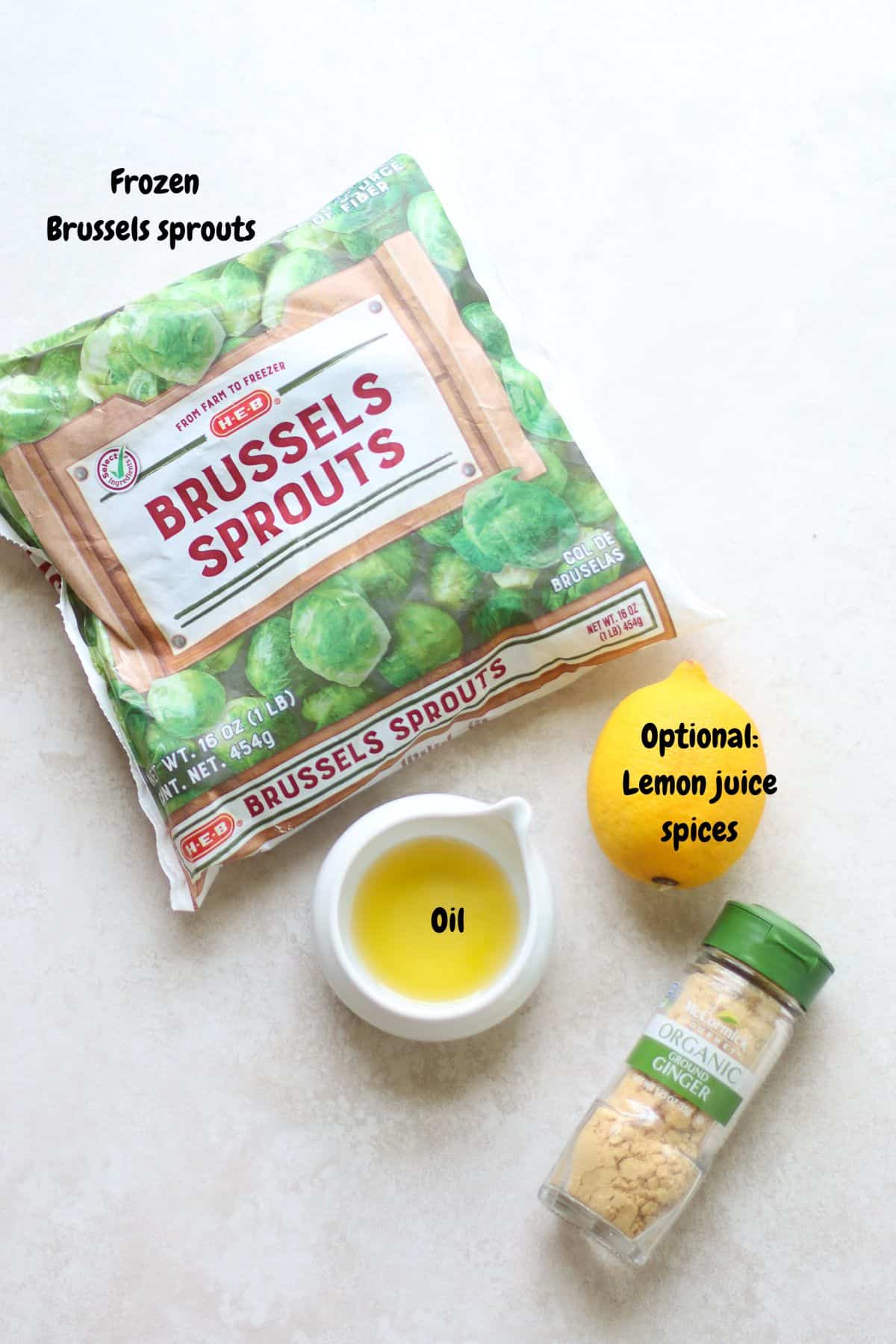
- Frozen brussels sprouts
- Oil or butter - Any neutral oil will work, like olive oil or avocado oil. I also love sesame oil for sauteeing.
- Seasonings - Simply adding your favorite herbs and spices can really enhance the flavor. Don't be afraid to experiment! Garlic, ginger, oregano, cumin, Italian seasoning, curry powder, parsley, chili powder...endless options! I especially love balsamic vinegar + brussels sprouts combo.
How to Cook Frozen Brussels Sprouts
Here are my top two methods for achieving the best flavored and textured cooked frozen Brussels sprouts. While I've found success with steaming other frozen vegetables, I do not recommend it for Brussels sprouts.
There's a higher chance of overcooking them, resulting in bitter flavors and unpleasant odors.
There is no need to thaw the Brussels sprouts. Just add straight from the freezer!
I will say upfront that although the exterior does get nicely browned as you see pictured, the texture will be softer than cooked fresh Brussels sprouts.
But guess what? If you have a toddler, you may find that they prefer this because it's easier to chew. Both of my kids do. And you will love it because there's no need for prep work.
It's a game changer!
Roast
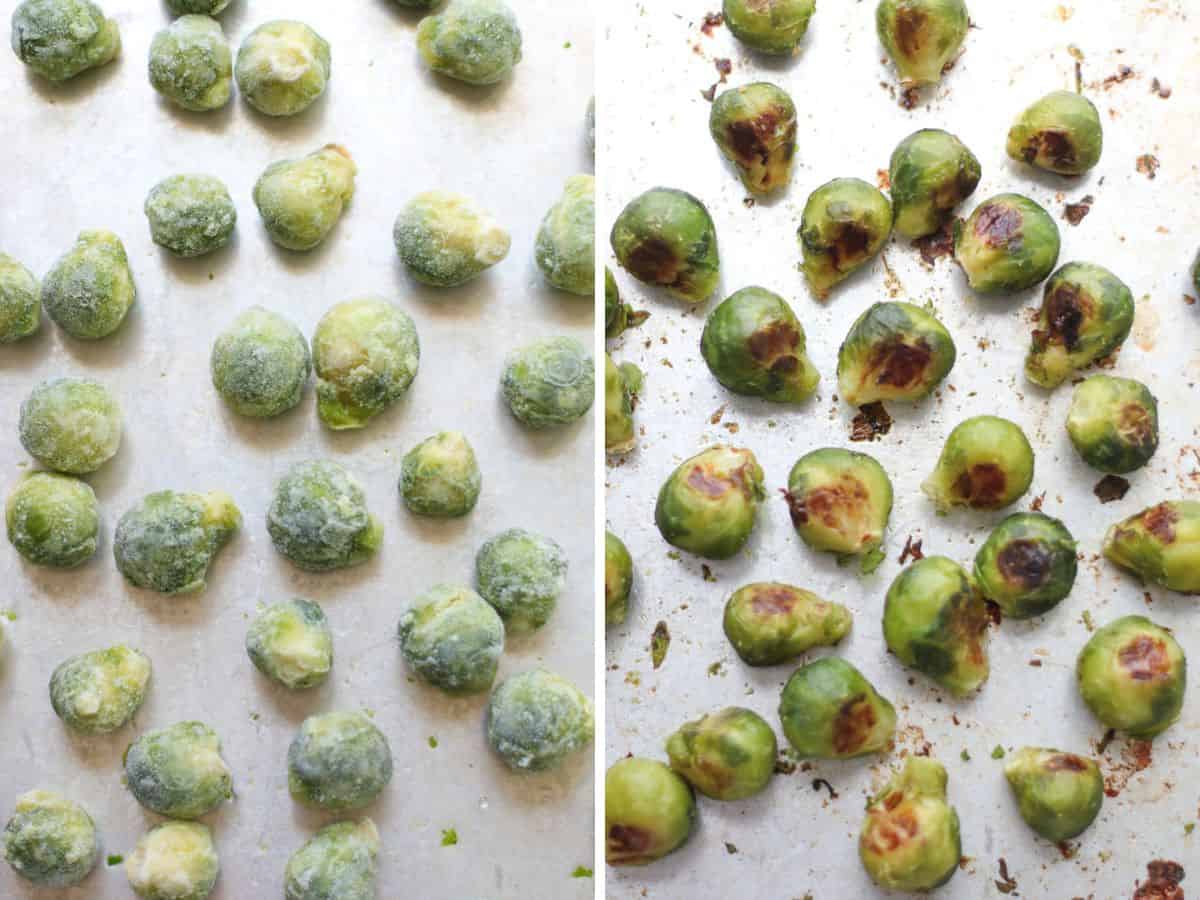
This is my family's favorite cooking method.
- Preheat oven to 425°F. Grease or line a large baking sheet with parchment paper or baking mat. I've found that the Brussels sprouts get a big crispier when roasted directly on the pan. I absolutely LOVE these sheet pans! They are super durable and conducts heat efficiently and evenly.
- Add the whole frozen Brussels sprouts to the baking sheet in a single layer, taking care not to overcrowd the pan. Place in the oven and roast for 10 minutes. This extra step assists in removing excess water, which will help your brussels sprouts get nicely browned and crisp on the exterior (will be soft in the center).
- Remove from the oven and wipe down any liquid. You can slice the sprouts in half or leave whole (while halving will result in crispier texture, I find this quite tedious. So I will leave the decision up to you!). Add oil and seasonings of choice. Toss with tongs until well coated.
- Place back in the oven and roast for another 10 minutes. If you want it to be extra crispy and brown, broil on high for 5 minutes or so.
- Sprinkle some parmesan cheese or nutritional yeast or balsamic vinegar if you really want to kick it up a notch!
Saute
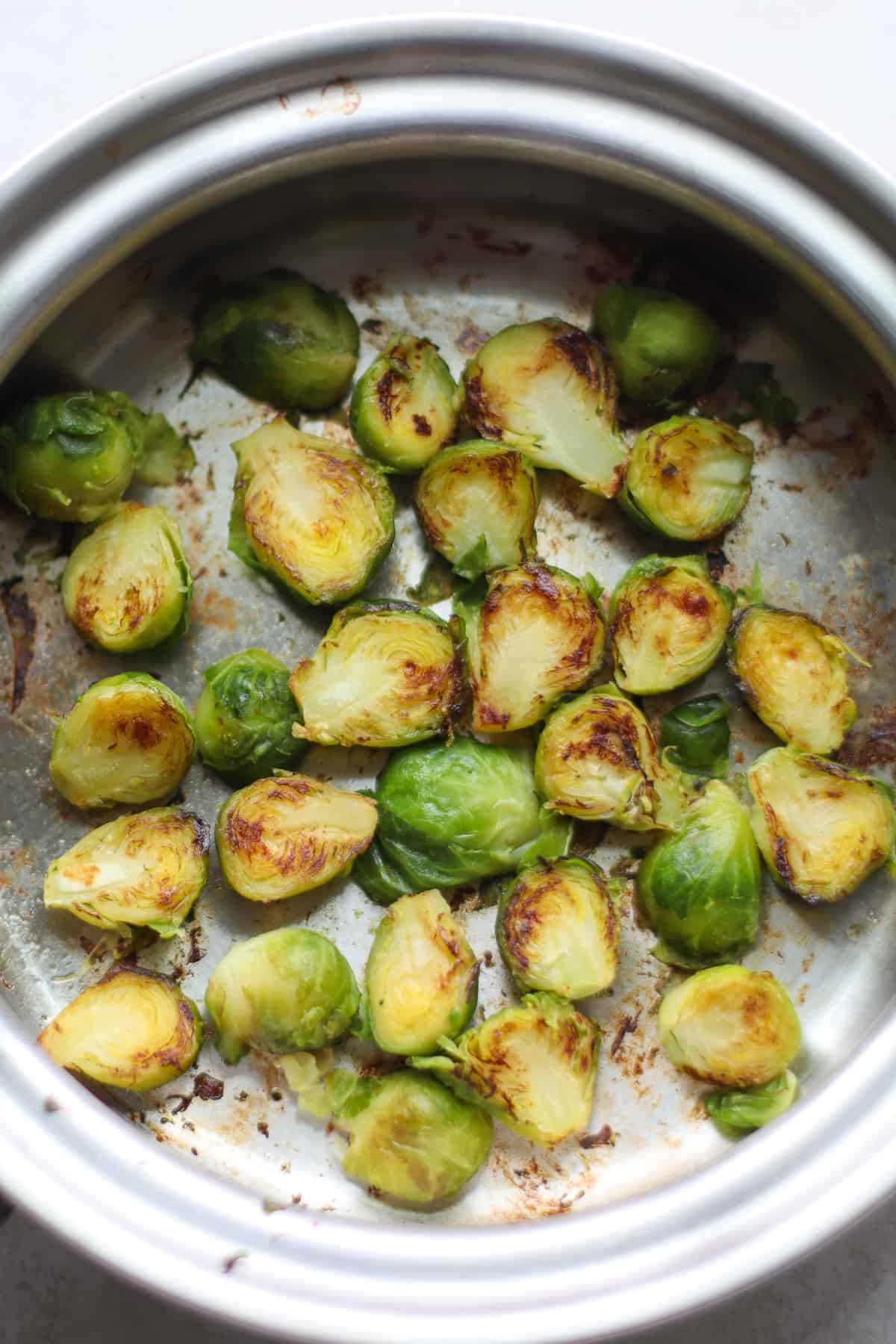
Pro tip: The key is to add some water or stock to properly thaw and cook the Brussels sprouts prior to cooking with oil.
- Add Brussels sprouts to a large skillet or frying pan. Add ¼ of water for every ½ pound (8 ounces) and cook covered until the ice from the sprouts melts, about 1-2 minutes.
- Transfer to a colander and shake off excess moisture. Wipe down the pan. Otherwise, oil will splatter everywhere. Then cut the sprouts into halves. You can leave the small ones whole.
- Add oil or butter to the same skillet and heat over medium-high heat. Add Brussels sprouts cut side down and saute for 3-5 minutes, taking care not to toss too much so the sprouts get a chance to brown.
- Add seasoning(s) of choice and a squeeze of fresh lemon juice or balsamic vinegar. In my opinion this is a MUST!
Tips for Success
- Don’t thaw frozen Brussels sprouts in the fridge or on the countertop. The pieces will get too soggy. Even though there is no need, if you really want to thaw them, add to a large bowl, cover with hot water and let it sit for 2-3 minutes. Drain and pat dry with a kitchen or paper towel.
- Avoid overcooking! Frozen Brussels sprouts is already parboiled (or blanched in boiling water for several minutes) before it is flash frozen so it will cook faster than chopped fresh Brussels sprouts.
Serving Suggestions
You can serve this easy and healthy side dish with just about anything!
Some suggestions include:
- Roasted Turkey Breast
- Carrot lentil soup
- Blender Tomato Soup
- Turkey Rice Meatballs
- Roasted, Steamed, or Poached Salmon
- Shrimp
- Yogurt Baked Chicken
- Baked Salmon Patties
- Tofu - especially this miso tofu!
Storage
I recommend enjoying the cooked sprouts immediately for best texture. But as a mom of two littles with unpredictable food preferences, leftovers are inevitable!
In that case, allow the vegetables to cool before transferring to an airtight container. It will keep in the refrigerator for 3-4 days.
You can reheat briefly in the microwave or on the stove or enjoy cold, which is what we do most of the time.
Frequently Asked Questions
Frozen Brussels sprouts is harvested at peak ripeness, blanched, and flash frozen to preserve most of the nutrients, kill bacteria, and prevent spoiling. The one difference is that the texture of frozen won’t be as crisp and, again, that’s because it’s already partially cooked.
There's no need! It's actually best to cook straight from the freezer.
You may come across recommendations to thaw (especially for sauteeing) in order to remove excess moisture. But follow my tips for each of the cooking methods and say goodbye to soggy, flavorless frozen Brussels sprouts!
Did you make this recipe? Leave a rating below and let me know how you liked the recipe! Your feedback means so much to me!
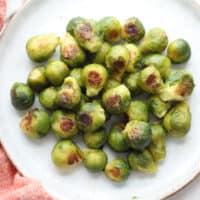
How to cook frozen Brussels sprouts
Equipment
Ingredients
- 16 ounce bag of frozen Brussels sprouts
- 2 tablespoons olive or avocado oil
- 1-2 teaspoons seasoning(s) of choice
- (Optional) lemon juice, parmesan cheese, balsamic vinegar
Instructions
Roast
- Preheat oven to 425°F. Grease or line a large baking sheet with parchment paper or baking mat. I've found that the Brussels sprouts get a big crispier when roasted directly on the pan.
- Add the frozen brussels sprouts to the baking sheet in a single layer, taking care not to overcrowd the pan. Place in the oven and roast for 10 minutes. This extra step assists in removing excess water, which will help your Brussels sprouts get nicely browned and crisp on the exterior (will be soft in the center).
- Remove from the oven and wipe down any liquid. Slice the sprouts in half or leave whole (while halving will result in crispier texture, I find this quite tedious. So I will leave the decision up to you!). Add oil and seasonings of choice. Toss until well coated.
- Place back in the oven and roast for another 15 minutes. If you want it to be extra crispy and brown, broil on high for 5 minutes or so.
- Sprinkle some parmesan cheese or nutritional yeast or balsamic vinegar if you really want to kick it up a notch!
Saute
- Add Brussels sprouts to a large skillet or frying pan. Add ¼ of water for every ½ pound (8 ounces) and cook covered until the ice from the sprouts melts, about 1-2 minutes.
- Transfer to a colander and shake off excess moisture. Wipe down the pan. Otherwise, oil will splatter everywhere. Then cut the sprouts into halves. You can leave the small ones whole.
- Add oil or butter to the same skillet and heat over medium-high heat. Add Brussels sprouts cut side down and saute for 3-5 minutes, taking care not to toss too much so the sprouts get a chance to brown.
- Add seasoning(s) of choice and a squeeze of fresh lemon or balsamic vinegar.

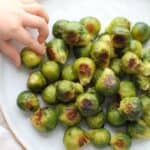
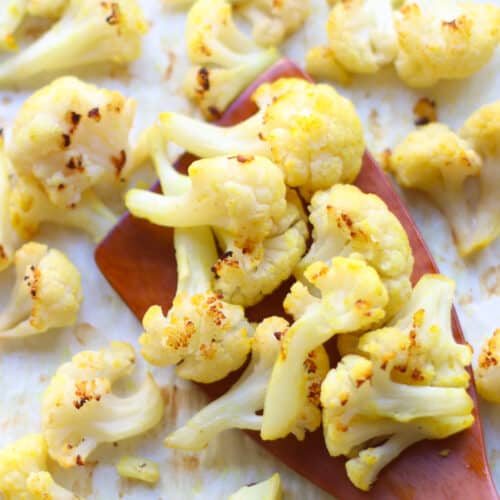
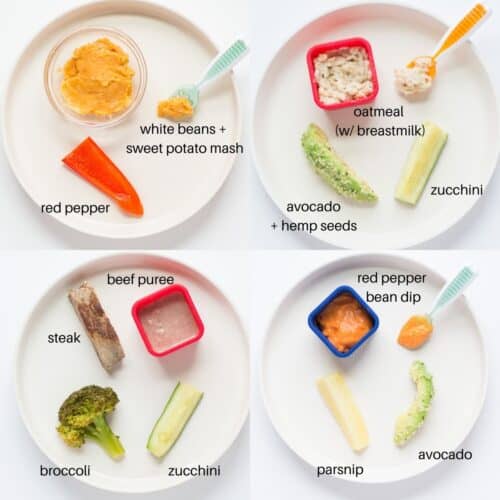
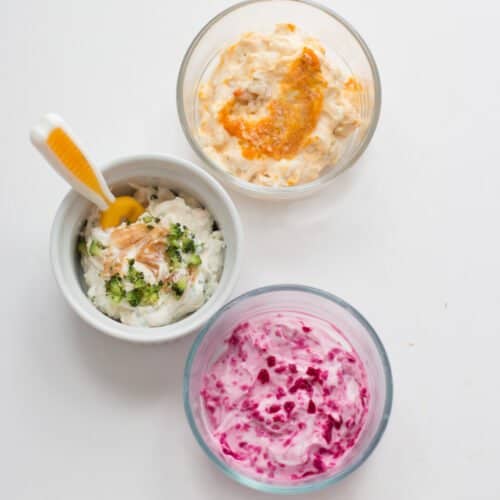
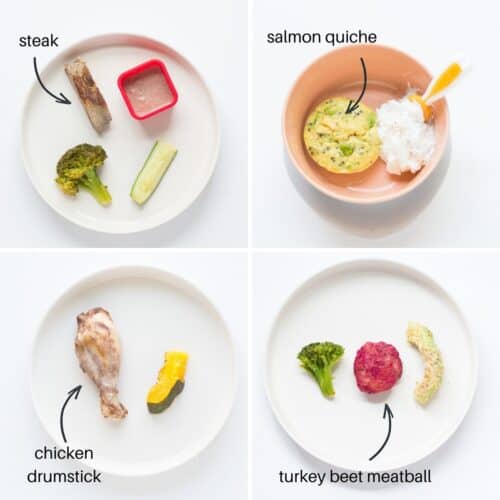

Leave a Reply